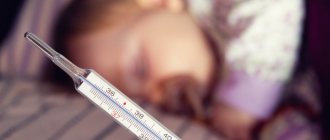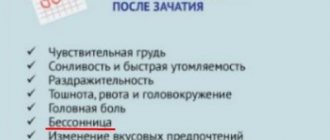Convulsions
– a sudden disorder of brain activity, manifested by various disorders in the motor, psycho-emotional, sensitive and vegetative spheres. Convulsions can occur with loss of consciousness, as well as against the background of preserved or partially preserved consciousness.
Seizures in children can occur at any age, but it is generally accepted that up to two-thirds of seizures occur in the first 3 years of life. Being a typical manifestation of epilepsy, seizures do not always indicate the presence of this disease in a child. Convulsive seizures are recorded in 5-10% of children, epilepsy is diagnosed in 0.5-1% of the population.
The causes of seizures in children can be:
- Perinatal disorders
- birth trauma, cerebral hypoxia/ischemia, intracranial hemorrhage, intrauterine infections (intrauterine infection of the fetus with rubella viruses, cytomegaly virus (CMV) or the causative agent of toxoplasmosis). - Infections
- meningitis, encephalitis, brain abscess. - Brain injuries
- brain contusion, less often concussion. - Metabolic disorders
- decreased levels of calcium, sodium, magnesium, blood sugar (respectively, hypocalcemia, hyponatremia, hypomagnesemia, hypoglycemia), increased sodium levels in the blood (hypernatremia), renal failure. - Increased body temperature
(febrile seizures) - Neurological diseases
- epilepsy, congenital malformations of the central nervous system, hereditary metabolic diseases (amino acid metabolism disorders, mitochondrial diseases, glycogenosis, etc.), phakomatoses (neurofibromatosis, tuberous sclerosis, etc.), brain tumors. - Drug withdrawal syndrome
is seizures in newborns born to mothers who use drugs.
SEIZURES AND CONVIVUS SYNDROME IN CHILDREN
Seizures are the most common manifestation of central nervous system damage in childhood. It is believed that up to 2/3 of seizures in children occur in the first 3 years of life. The stages of development (maturation) of the central nervous system have a pronounced influence on the electroencephalographic and clinical features of the manifestations of seizures in children. If a newborn child who has suffered hypoxic-ischemic damage to the nervous system may initially manifest multifocal clonic convulsions, then by the age of six months they can transform into infantile spasms (with a characteristic EEG pattern similar to the so-called hypsarrhythmia), and by 2 years they can acquire the appearance of myoclonic ones. seizures, atypical absence seizures and/or generalized tonic-clonic seizures.
Such an evolution of convulsive syndrome is not uncommon in the practice of pediatric neurologists. In this regard, it is advisable to separately consider seizures in children at different periods of life:
* newborns;
* 1st year;
* early age;
* later life.
Without being able to touch upon all aspects of the diversity of manifestations of convulsive syndromes in childhood in the format of one work, as well as reflect the features of therapy in various clinical situations, below we will present their main age-related differences. When describing therapeutic approaches, we will first touch on some features of the treatment of paroxysmal seizures in children of the neonatal period of development, infancy and early childhood.
Etiology and pathogenesis
A number of numerous endogenous and exogenous factors can lead to the occurrence of seizures. These include:
* infections;
* intoxication;
* injuries;
* diseases of the central nervous system;
* metabolic defects;
* genetic predisposition, etc.
Seizures are a typical manifestation of epilepsy, but their presence does not always indicate this disease. Therefore, in this article we will focus primarily on the description of seizures of both epileptic and non-epileptic origin. The cause of the development of convulsive conditions can be hypoxia, microcirculation disorders, as well as hemorrhagic manifestations.
The pathogenesis of convulsive conditions is determined by their etiology (which, as mentioned above, is multifactorial), therefore it is quite complex and ambiguous in children of any age. In some cases, a whole complex of pathophysiological mechanisms is involved in the pathogenesis of seizures.
The exact pathogenetic mechanisms of seizures are unknown. Nevertheless, a number of neurophysiological factors are important in their development. Firstly, the initiation of a convulsive attack requires the presence of a group of neurons capable of generating a pronounced explosive discharge, as well as a GABAergic inhibitory system. The transmission of convulsive discharge depends on excitotor (excitatory) glutamatergic synapses. There is evidence that excitotor amino acid neurotransmitters (glutamate, aspartate) cause irritation of neurons by acting on specific cellular receptors. Seizures may originate from regions of neuronal death, and these regions themselves may contribute to the development of new hyperexcitable synapses that cause paroxysms. In particular, lesions in the temporal lobes (slow-growing gliomas, hamartomas, gliosis and arteriovenous malformations) cause seizure activity, and when the abnormal tissue is surgically removed, the seizures stop.
Currently, the hypothesis about the existence of the so-called kindling phenomenon (from the English “kindling” - fire) and its role in the formation (or stabilization) of a focus of pathological activity with constant stimulation of the dopaminergic centers of the limbic system under the influence of psychoactive substances and other factors is also being considered.
It is hypothesized that recurrent seizure activity involving the temporal lobes of the brain may produce seizures in the contralateral intact temporal lobe via stimulus transmission through the corpus callosum.
The substantia nigra plays an integral role in the development of generalized seizures. It has been suggested that functional immaturity of the substantia nigra may play a significant role in the increased susceptibility to seizures of the immature brain. In addition, neurons of GABA-sensitive substrates of the substantia nigra can prevent seizure activity by modulating and regulating the dissemination, but not the initiation of convulsive paroxysms.
Seizures in newborns
According to their manifestations in the neonatal period, convulsions in newborns are as follows:
* small (or minimal) convulsions (convulsive activity is noted in the absence of tonic and clonic movements of the limbs: apnea (dyspnea), tonic rolling of the eyes, twitching and trembling of the eyelids, drooling, convulsive sucking and “chewing”);
* multifocal (multifocal) clonic seizures (migratory);
* focal (focal) clonic;
* tonic;
* myoclonic.
In neonatal seizures, importance is given to the actual age of the child. Thus, on the 1st-2nd day of life, seizures are more often caused by perinatal disorders (birth trauma, hypoxia, intracranial hemorrhage). Less common conditions in the first 48 hours of life are: drug withdrawal syndrome, so-called pyridoxine dependence, inborn errors of metabolism. Sometimes there is an accidental injection into the baby's scalp of an anesthetic given to his mother during labor to relieve pain during labor.
On the 3rd day of life, the most common cause of seizures in newborns is hypoglycemia, and on the 4th day and beyond (during the neonatal period) - infections. More often we are talking about generalized types of infections, such as sepsis and/or meningitis, as well as congenital infections such as rubella, toxoplasmosis, cytomegaly, herpes, etc. Other causes of seizures at this age include hypocalcemia, hypo- or hypernatremia, and hypomagnesemia. Kernicterus and tetanus are much less common, as are congenital developmental disorders (for example, arteriovenous fistula, etc.) or porencephaly.
Convulsions in perinatal disorders are a consequence of anoxia with cerebral edema due to birth trauma. Premature newborns are more likely to have microbleeds, while full-term newborns are more likely to have massive ones. With microhemorrhages (intracranial), convulsions in the form of tonic spasms (preceded by clonic twitching) develop on the 1st day of life. With massive hemorrhages, they are usually recorded between the 2nd and 7th days. Such convulsions are most often unilateral.
The first manifestations of hypocalcemia can be observed from the 1st day of life due to the following reasons: feeding with poorly adapted formulas with excess phosphorus content, long-term use of phenobarbital, etc. In addition to seizures, manifestations of hypocalcemia may include fluttering, laryngospasm, tremor, muscle twitching, carpopedal spasm. Between attacks, the condition of the newborns is not impaired. Convulsions are stopped by intravenous administration of 5-10 ml of 10% calcium gluconate solution.
Hypoglycemic convulsions are observed in respiratory distress syndrome, kernicterus, glycogenosis, adrenal hyperplasia, intrauterine growth retardation, Beckwith-Wiedemann syndrome, and also at birth from mothers with diabetes mellitus. In addition to seizures, hypoglycemia in newborns is expressed in tremor, cyanosis, muscle twitching (myoclonus), and apnea attacks.
Generalized convulsions and neuroinfections are observed in newborns with purulent meningitis, sepsis, intracranial hemorrhages (a consequence of disseminated intravascular coagulation syndrome, cerebral ischemia-hypoxia, cardiovascular collapse, disturbances in thermoregulation, electrolyte balance, hypoglycemia, etc.).
Tetanus convulsions are rare these days. They appear on the 5-6th day after birth, when the umbilical cord is cut off without following the rules of antiseptics or when the umbilical wound is infected and are manifested by generalized spasticity (spontaneous or induced by external stimuli), as well as difficulty sucking, tension in the facial muscles, the so-called sardonic smile.
Convulsions in encephalitis are the result of intrauterine infection of the fetus with the rubella virus, cytomegaly or the causative agent of toxoplasmosis, and develop immediately after birth. If the infectious process has died down before the onset of childbirth, convulsions may begin much later (in the 1st year of life). With intrauterine infection with the herpes virus, convulsive manifestations of encephalitis occur by the end of the 1st week of life.
Pyridoxine-dependent seizures develop in newborns whose mothers received pyridoxine for a long time during pregnancy, as well as with a hereditary metabolic defect (with an increased need for vitamin B6). Between attacks, children are restless and react with muscle twitching to external irritations. These seizures do not respond to conventional anticonvulsant treatment, but high-dose pyridoxine (25 mg/kg/day) quickly normalizes the condition.
Convulsions during drug withdrawal syndrome can develop in newborns of drug-addicted mothers who use hard drugs (morphine, heroin, etc.). In addition to seizures, hypersalivation and increased excitability are characteristic.
Convulsions due to electrolyte disturbances, hypo- and hypernatremia due to dehydration (or its improper correction) cause manifest convulsions with persistent neurological disorders. Hypomagnesemia can be suspected if hypocalcemic seizures do not respond to calcium therapy.
Metabolic disorders. Their presence should be suspected if seizures do not respond to standard anticonvulsant therapy.
With galactosemia, convulsions appear after feeding. Additional signs are icteric skin and hepatosplenomegaly.
Convulsions with fructose intolerance occur against the background of hypoglycemia (up to coma) immediately after consuming mixtures containing sucrose or cane sugar, or in older children - fruit and vegetable juices and purees.
Congenital disorders of amino acid metabolism, accompanied (or may be accompanied) by seizures, are extremely numerous. Their main varieties are listed below.
Maple syrup urine disease (valinoleucinuria) is clinically characterized by hypoglycemic seizures associated with poor sucking, persistent metabolic acidosis, progressive neurological impairment, and maple syrup odor in the urine.
Non-ketotic hyperglycinemia is a consequence of insufficient breakdown of glycine. It is more common in ketotic form. Its manifestations can be expected 48 hours after birth in the form of hiccups and/or regurgitation, decreased response to external stimuli, and myoclonic jerks. Multifocal seizures are not responsive to traditional anticonvulsants. A replacement blood transfusion may improve the condition in the short term. The outcome is fatal; among survivors there is mental retardation and profound neurological deficit.
Ketotic hyperglycinemia (varieties: propionic and methylmalonic) are the most common disorders of amino acid metabolism. They occur with clinical severity from the 1st week of life. Their manifestations: metabolic acidosis, vomiting, dehydration, convulsions due to metabolic changes against the background of existing enzyme deficiency. The clinical effect is achieved with the use of adequate diet therapy. In case of methylmalonic hyperglycinemia, the administration of vitamin B12 (i.m.) ensures normal development of children.
Other organic acidemias that may be accompanied by seizures include:
* isovaleric;
* beta-methylcrotonylglycinuria;
* 3-hydroxy-2-methylglutaric aciduria;
* multiple carboxylase deficiency (neonatal form of the disease);
* adenylsuccinate lyase deficiency (usually after the neonatal period);
* short-chain acyl-CoA dehydrogenase deficiency;
* glutaric aciduria type 2.
A number of genetic diseases (defects) are also often accompanied by seizures. Pyridoxine-dependent seizures have already been discussed above.
Convulsions in Bloch-Sulzberger syndrome (incontinentia pigmenti), a disease of the central nervous system, ectoderm with damage to the skin, eyes, and (subsequently) teeth. Appear from the 2-3rd day of life (usually unilateral). The disease is 20 times more common in girls. Skin rashes in the form of an erythematous/vesicular rash are characteristic. Seizures can be controlled with standard anticonvulsants.
Convulsions in Smith-Lemli-Opitz syndrome (autosomal recessive) appear from the 3rd day of life due to perinatal hypoxia and structural disorders of the hemispheres and cerebellum. They are accompanied by lethargy, a generalized decrease in muscle tone, and difficulty breathing. Phenotypically: convexity of the nostrils, ptosis, cryptorchidism, hypospadias, syndactyly of the 2nd and 3rd toes. About 20% of patients do not survive beyond 12 months.
Congenital disorders of the central nervous system are often accompanied by seizures. Among them:
* arteriovenous fistula;
* congenital hydrocephalus;
* porencephaly;
* microgyria;
* agenesis of the corpus callosum (corpus callosum);
* hydrocephalus and other types of brain dysgenesis.
Benign “familial” neonatal seizures. In this condition, there is a family history indicating the presence of seizures in the neonatal period in other family members. They are inherited in an autosomal dominant manner and appear on the 3rd day of life or later. Seizures resolve spontaneously (without treatment) after 1-3 weeks. No inborn errors of metabolism are detected.
Treatment.
The newborn should be provided with maximum rest. According to indications, symptomatic treatment is carried out in the form of dehydration and rehydration therapy; measures aimed at normalizing microcirculation, as well as improving tissue metabolism, etc.
Anticonvulsants used in the early neonatal period include phenobarbital (0.001-0.005 g/kg), seduxen (diazepam) (1 mg/kg IV or IM), GHB (up to 50 mg/kg). Subsequently, newborns are prescribed phenobarbital (0.001-0.005 g/kg in 2-3 doses).
If treatment is insufficiently effective, an anticonvulsant mixture can be used, including phenobarbital, diphenine (0.003-0.005 g), papaverine (0.001-0.005 g), borax (0.03-0.05 g), calcium gluconate (0.01-0.05 d), prescribed 2-3 times a day.
For minor and truncal convulsions, the above mixture is alternated with radedorm (0.00012 g 1-2 times a day). If there is resistance to treatment, they resort to the prescription of valproate and/or clonazepam.
Seizures in children of the first year of life
In children older than 1 month, the following types of seizures are more common:
1. Primary generalized (tonic-clonic, grand mal type). They are characterized by a tonic phase lasting less than 1 minute, with the eyes rolling upward. At the same time, gas exchange decreases (due to tonic contraction of the respiratory muscles), which is accompanied by cyanosis. The clonic phase of seizures follows the tonic phase, expressed in clonic twitching of the limbs (usually 1-5 minutes); This improves gas exchange. May be observed: hypersalivation, tachycardia, metabolic/respiratory acidosis. The postictal state often lasts less than 1 hour.
2. Focal motor seizures (partial, with simple symptoms). They are characterized by their occurrence in one of the upper limbs or in the facial area. Such convulsions lead to deviation of the head and diversion of the eyes towards the hemisphere opposite to the localization of the convulsive focus. Focal seizures can begin in a limited area, without loss of consciousness, or, conversely, generalize and resemble secondary generalized tonic-clonic seizures. Indications of the focus are Todd's palsy or abduction of the head and eyes towards the affected hemisphere. They appear after an attack of these seizures.
3. Temporal or psychomotor seizures (partial, with complex symptoms). In approximately 50% of cases they are preceded by an aura. They can imitate other types of seizures, be focal, motor, grand mal, or with frozen gaze. Sometimes they look more complex: with stereotypical automatisms (running - in those who have begun to walk, laughter, licking lips, unusual movements of the hands, facial muscles, etc.).
4. Primary generalized absence seizures (petit mal type). Rarely develop in the first year of life (more typical for children over 3 years of age).
5. Infantile spasms (with hypsarrhythmia - according to EEG data). They most often appear in the 1st year of life and are characterized by pronounced myoclonic (salaam) spasms. Infantile spasms (West syndrome) can develop due to the presence of various neurological pathologies or without any obvious previous disorders. With infantile spasms, psychomotor development slows down, and in the future there is a high probability of severe developmental delay.
6. Mixed generalized seizures (small motor or atypical petit mal). This group of seizure disorders is typical of Lennox-Gastaut syndrome, which is characterized by frequent, poorly controlled seizures, including atonic, myoclonic, tonic and clonic, which are accompanied by an EEG pattern with atypical spikes and waves (less than three spike-waves in 1 s), multifocal spikes and polyspikes. The age of patients often exceeds 18 months, but this syndrome can develop in the 1st year of life following infantile spasms (transformation from West syndrome). Children often have severe developmental delays.
Febrile seizures (FS). They are observed in children starting from 3 months of age, with an increase in body temperature (>38.0°C). As a rule, they are primarily generalized tonic-clonic, although they can be tonic, atonic or clonic.
FS are considered simple if they were noted once, lasted no more than 15 minutes and were not focal. Complex FS are characterized by repeated occurrence, duration, and focality. All patients under 12 months of age require lumbar puncture and metabolic screening.
Risk factors for the development of epilepsy in FS include:
— indications of the presence of neurological disorders or psychomotor development disorders;
- a family history of afebrile seizures;
- complex nature of febrile seizures.
In the absence or presence of only one risk factor, the likelihood of developing afebrile seizures is only 2%. If two or more risk factors are present, the likelihood of epilepsy increases to 6-10%.
Treatment. For primary generalized seizures (grand mal), phenobarbital, phenytoin, and carbamazepine are usually used. As an alternative, valproate or acetazolamide can be used in some cases.
Partial simple seizures (focal). Phenobarbital, phenytoin, carbamazepine, and primidone are used. If necessary, other therapeutic agents can be used (valproic acid preparations.
Partial complex seizures (temporal lobe epilepsy). The priority prescription of drugs carbamazepine, phenytoin and primidone is provided. An alternative to them are phenobarbital drugs, valproate and acetazolamide (as well as methsuximide).
Primary generalized seizures (petit mal, absence seizures). The main antiepileptic drugs AEDs in the described clinical situation are ethosuximide, valproates, methsuximide. Other agents: acetazolamide, clonazepam, phenobarbital.
Treatment of infantile spasms suggests effectiveness from the use of a synthetic analogue of ACTH, valproate, and clonazepam. Other types of therapy include the use of phenytoin, phenobarbital, and acetazolamide. If possible, a ketogenic diet (KD) can be used.
Febrile seizures. The advisability of prescribing anticonvulsants to children for FS has continued to be extremely controversial for many years. Nevertheless, when deciding in favor of preventive therapy using AEDs, phenobarbital drugs are most often used, and valproates are used less often.
Mixed generalized seizures. Main AEDs: phenobarbital, valproate, clonazepam. As alternatives, acetazolamide, diazepam, ethosuximide, phenytoin, methsuximide, carbamazepine, as well as tranxene, etc. can be used.
Dosing of main anticonvulsants (in the 1st year of life)
- diazepam - 0.1-0.3 mg/kg up to a maximum dose of 5 mg intravenously slowly;
— phenytoin — 5 mg/kg/day (2 times, per os);
— phenobarbital — 3-5 mg/kg/day (2-3 times, per os);
- primidone - 5-25 mg/kg/day (1-2 times);
— carbamazepine — 15-30 mg/kg/day (2-3 times, per os);
- ethosuximide - 20-30 mg/kg/day (2 times);
- methsuximide - initial dose 5-10 mg/kg, maintenance dose - 20 mg/kg (2 times, per os);
- valproate - 25-60 mg/kg/day (2-3 times, per os);
- clonazepam - 0.02-0.2 mg/kg/day (2-3 times, per os);
— paraldehyde — 300 mg (0.3 ml/kg, rectally);
- acetazolamide (diacarb) - initial dose 5 mg/kg, maintenance dose - 10-20 mg/kg (per os).
Features of the treatment of seizures in children of the first year of life (including newborns). You should always take into account the fact that phenytoin (diphenin) is absorbed with low efficiency in the neonatal period, although subsequently its utilization gradually improves.
Valproic acid preparations, when administered simultaneously, interact with phenytoin and phenobarbital, leading to an increase in their levels in the blood. With long-term administration of valproate, it is necessary to monitor the indicators of a general blood test, as well as examine the level of liver enzymes (ALT, AST) initially (in the first months of therapy) with a frequency of once every 2 weeks, then monthly (for 3 months), and subsequently - 1 once every 3-6 months.
Almost all currently known anticonvulsants, to a greater or lesser extent, have a so-called rickets effect, leading to the appearance or aggravation of manifestations of vitamin D deficiency rickets. In this regard, children of the first year of life receiving treatment with anticonvulsants should be provided with an adequate supply of vitamin D (D2 - ergocalciferol, or D3 - cholecalciferol), as well as calcium supplements.
Convulsions in young children. Clinical manifestations of West and Lennox-Gastaut syndromes have already been described above. As already indicated, they can also be observed in the first 12 months of life, although they are more typical for young children.
Secondary generalized seizures. These include epilepsy with manifestations in the form of simple and/or complex partial seizures with secondary generalization, as well as simple partial seizures turning into complex partial seizures with subsequent secondary generalization.
Febrile seizures in young children occur with no less frequency than in the 1st year of life. The principles of approaches to their diagnosis and therapeutic tactics do not differ from those in children of the first year of life.
Seizures in children over 3 years of age
Primary generalized absence seizures are not uncommon among children in this age group. Their identification and adequate treatment is entirely within the competence of pediatric neurologists and epileptologists. Pediatricians and representatives of other pediatric specialties should not ignore identified episodes of short-term “disconnection” of children (with a lack of response to treatment) or complaints from parents about what non-specialists more often call “ideas.”
Juvenile myoclonus epilepsy is a subtype of idiopathic generalized disease with manifestations of impulsive petit mal attacks. The appearance of seizures is typical after 8 years of age. A distinctive feature is the presence of myoclonus, the severity of which varies from minimal (regarded as “clumsiness”) to periodic falls, with no disturbances of consciousness noted. However, most of these patients have sporadic tonic-clonic seizures, and absence seizures occur in approximately one third of children with this type of epilepsy.
Catamenial epilepsies. Without dwelling in detail on this group of chronic paroxysmal conditions associated with the menstrual cycle, we note that they can be cited as one of the examples of age-dependent convulsive conditions in relation to female patients who have reached puberty.
Febrile seizures can also occur in children over 3 years of age (in preschool age), although during this period of life they occur with significantly less frequency. The presence of episodes of afebrile seizures (without fever) in this pathology indicates the development of symptomatic epilepsy, which must be treated in accordance with the principles formulated by the International League Against Epilepsy (ILAE).
Benign focal epilepsies of childhood.
Among the pathological conditions that make up the content of this concept, one should consider rolandic epilepsy (central-temporal) with characteristic changes in the EEG, which is not uncommon for children aged 4 to 13 years; as well as Gastaut and Panoyotopoulos syndromes. The prognosis for rolandic epilepsy is favorable, since seizures usually disappear spontaneously with the onset of puberty. Gastaut syndrome is another type of idiopathic localization-related epilepsy in children, in which (in addition to EEG changes) visual symptoms are usually noted at the time of the attack: amblyopia and/or hallucinations. With this type of epilepsy, the prognosis is also quite favorable - by the age of 18, in most children, clinical and electroencephalographic signs of the disease disappear.
Panoyotopoulos syndrome can occur in patients older than 3 years (as well as in young children); its other name is “benign infantile seizures with occipital adhesions with an early onset.” The latter form of the disease is usually diagnosed between 4 and 5 years of age and is more common than the Gastaut variant. Its characteristic symptoms are pallor, sweating, vomiting in combination with rolling eyes and deviation of the head, as well as changes in consciousness of varying severity with partial or secondary generalized convulsions. Most seizures begin at night. Visual impairment (transient) has been reported. In 10% of patients with the described variant of epilepsy, rolandic epilepsy gradually develops.
There is also Janz syndrome - juvenile myoclonus epilepsy, a subtype of idiopathic generalized epilepsy, also called impulsive petit mal and usually clinically manifested after 8 years of age. Symptoms of the disease include morning myoclonic twitches, generalized tonic-clonic convulsions immediately after waking up, etc.
It is not possible to describe all types of convulsive reactions in children of this age group due to their large number, multifactorial nature and diversity of clinical manifestations.
The main types of paroxysmal disorders of non-epileptic origin in childhood
These include, for example, psychogenic convulsions, syncope, migraines, apnea, sleep disorders, tics, shuddering attacks, gastroesophageal reflux, cardiac conduction disorders, etc.
It is the conditions listed above that should be remembered when making a differential diagnosis between epileptic and non-epileptic paroxysmal conditions in children over 3 years of age. For example, psychogenic seizures are rarely observed in children before the age of 6 years.
**
In general, when examining a child with a seizure disorder, it is recommended to try to resolve the following most important questions first:
1. Are the observed attacks convulsions?
2. If yes, what kind of cramps are they?
3. What is the risk of relapse (epilepsy)?
4. If present, what epileptic syndrome should the observed seizures be classified as?
5. If the seizures are related to symptomatic epilepsy, what is their etiology?
Only such an approach allows us to timely and correctly establish the cause of the presence of convulsive activity in children of different ages, based on objective clinical, laboratory and instrumental (EEG, CT, MRI, etc.) research methods.
It is quite natural that when describing the characteristics of convulsive syndromes in children of the 4 age periods we have identified (neonatal, infant, early, and also over 3 years of age), we have made a number of conventions, since paroxysmal states characteristic of school-age children can in some cases observed in patients under 3 years of age, and vice versa.
It is known that in most cases, convulsive episodes in children are isolated (single) and do not require further treatment. Recurrent seizures, most often related to various types of epilepsy, require carefully selected and long-term therapy with anticonvulsants under the supervision of a pediatric neurologist.
Vladimir STUDENIKIN, professor.
Vladimir SHELKOVSKY, candidate of medical sciences.
Svetlana BALKANSKAYA, candidate of medical sciences.
Research Institute of Pediatrics, Scientific Center for Children's Health, Russian Academy of Medical Sciences.
The main clinical types of seizures in children:
- tonic
(synchronous/asynchronous tension of the muscles of the trunk, limbs) - clonic
(synchronous/asynchronous rhythmic contractions of all muscles) - tonic-clonic
(a combination of tonic and clonic seizures with a predominance of one or another component) - myoclonic
(repeated, often symmetrical contractions of individual muscles or muscle groups) - atonic
(sudden decrease in muscle tone) - infantile spasms
(short-term, successive symmetrical flexion/extensor contractions of the muscles of the neck, limbs and trunk) - absence seizures
(sudden short-term cessation of motor and speech activity with “freezing” of the gaze).
Signs of seizures in a newborn
How to recognize cramps in a baby is very simple. The symptom appears suddenly in the child, against the background of normal health - the baby can play or sleep peacefully.
The main features are as follows:
- The child begins to scream;
- The baby's head is thrown back;
- The child's body is tense;
- Infants often experience twitching of the limbs;
- Breathing is impaired, the baby cannot fully inhale, which creates panic;
- Foam may appear at the mouth, and loss of consciousness may occur.
Attention!
It is difficult to recognize an attack in newborns - the baby cannot explain in words what happened. Inexperienced parents often mistake seizures for ordinary hysteria.
Diagnostics
Scope of required examination
a child with seizures is determined by the doctor individually, it depends on the nature, conditions of occurrence, and frequency of seizures; the general condition of the patient, the characteristics of his somatic and neurological status and may include an EEG, if necessary, EEG video monitoring, CT or MRI of the brain, lumbar puncture, biochemical studies of blood, cerebrospinal fluid, urine, etc. The purpose of the studies is to identify the possible cause of seizures and Establishing a diagnosis, allowing us to formulate the correct approaches to treating the child.
Convulsive episodes in newborns and young children are in most cases isolated and do not require further treatment. Recurrent seizures, most often associated with various types of epilepsy, require carefully selected and long-term therapy with anticonvulsants under the supervision of a pediatric neurologist (epileptologist).
How to treat fever in a child who has previously had febrile seizures?
If the child does not have an increase in temperature during illness or after vaccination, it is not recommended to give antipyretic drugs! This does not reduce the risk of an attack.
If the temperature has risen, medications to reduce it make you feel better overall, but do not help with attacks.
The harm from anticonvulsants for the prevention of febrile seizures outweighs the benefits; they are almost never prescribed.
If a child’s febrile convulsions are prolonged, at the beginning of the attack it is recommended to administer a drug from the benzodiazepine group in the form of an enema, a spray in the nose or a gel on the cheek. Unfortunately, none of these forms are registered in Russia. Therefore, if an attack lasts longer than 5 minutes, an emergency doctor may give an injection of such a medicine.
For antipyretic drugs, children can be given ibuprofen at a dose of 10 mg/kg every 8 hours or paracetamol at a dose of 15 mg/kg every 6 hours. Don't give children aspirin!









